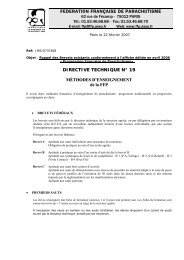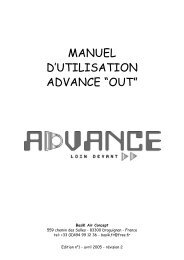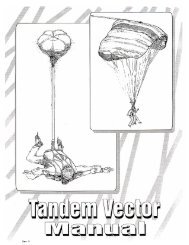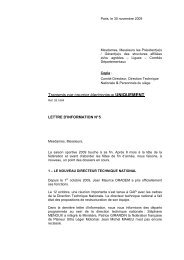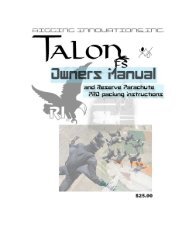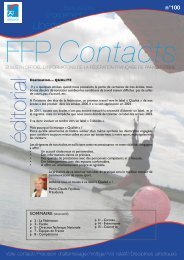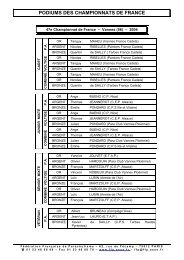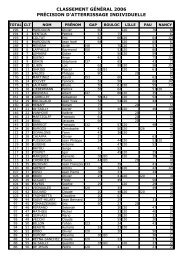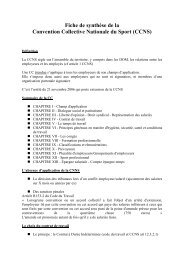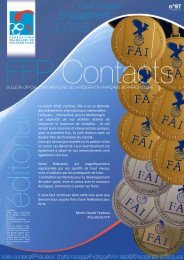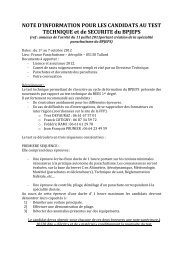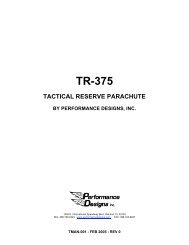Create successful ePaper yourself
Turn your PDF publications into a flip-book with our unique Google optimized e-Paper software.
V E C T O R O W N E R ’ S M A N U A L<br />
❈ Closing Loop<br />
The main container is held shut with a closing loop made of nylon suspension line sheathing. This<br />
loop is subject to wear. If it wears out and breaks, the main canopy may release prematurely and a<br />
malfunction may result. Replace the closing loop upon the first sign of wear. A closing loop is a lot<br />
less expensive than some of the possible consequences of a premature opening.<br />
❈ Hook and Loop Fastener<br />
Hook and loop fastener have many applications within skydiving. Even though it can eventually<br />
wear out, there exist few materials that can compete against it with regard to its flexibility,<br />
adaptability, and wide variety of applications. The “hook” portion of hook and loop fastener often<br />
attracts dirt, bits of grass, hair and other debris. You can clean the hook portion using a fine-toothed<br />
comb. The “loop” section generally remains clean but the nylon fibers sometimes tend to get pulled<br />
out of place. When you find that your hook and loop fastener is losing its adhesive qualities, replace<br />
it. Again, replacing a worn hook and loop fastener is a lot less expensive than a reserve repack or<br />
purchasing a main canopy due to a dislodged cutaway handle.<br />
CARING FOR YOUR VECTOR 3<br />
Your Vector 3 is manufactured primarily from nylon. Nylon is very durable, but is still susceptible<br />
to damage from several sources:<br />
❈ Sunlight<br />
The ultraviolet rays in sunlight quickly and permanently weaken nylon. Keep your Vector 3 out of<br />
direct sunlight as much as possible. Structural weakening of nylon may not be immediately<br />
noticeable. Prevention is the key.<br />
❈ Acids<br />
Acids damage nylon. Keep your Vector 3 away from hangar floors, dirty car trunks and similar areas<br />
where acids may be found. If such contamination does occur, immediately and thoroughly wash<br />
the rig with plenty of warm soapy water. Until a rig can be washed, baking soda will quickly<br />
neutralize most acids. If acid damage occurs or is suspected, a rigger should thoroughly inspect<br />
your Vector 3. Pay attention to where you place or store your rig.<br />
❈ Oils and Grease<br />
Most petroleum compounds do not weaken nylon; they simply stain it. A rigger using the proper<br />
petroleum solvent should promptly remove such stains.<br />
❈ Water<br />
Water will not structurally damage your Vector 3, but prolonged agitation in fresh water weakens<br />
webbing or may cause some fabric and tape colors to bleed. Salt water may damage nylon and<br />
cause hardware to corode if not promptly and thoroughly washed off with plenty of fresh water.<br />
Your rig will maintain its new appearance longer if it is kept dry.<br />
❈ Soil<br />
Soil may damage your Vector 3. Brush off the soil after it has dried and gently wash with warm<br />
soapy water. Be sure that the soil is not in the cable housings, Booth 3-Ring release or reserve<br />
ripcord pins or loops. Consult a rigger if your rig is heavily soiled or extremely dirty.<br />
❈ Sand<br />
Fine sand will weaken and cut webbing and fabrics of all types. Prolonged exposure to sand will<br />
shorten the life of the entire parachute assembly. One way to minimize the damage done by sand<br />
is to use a packing mat while packing.<br />
09354 - 11/26/2003<br />
section 6 : caring for your vector 3<br />
Page • 73:88<br />
Rev 0



